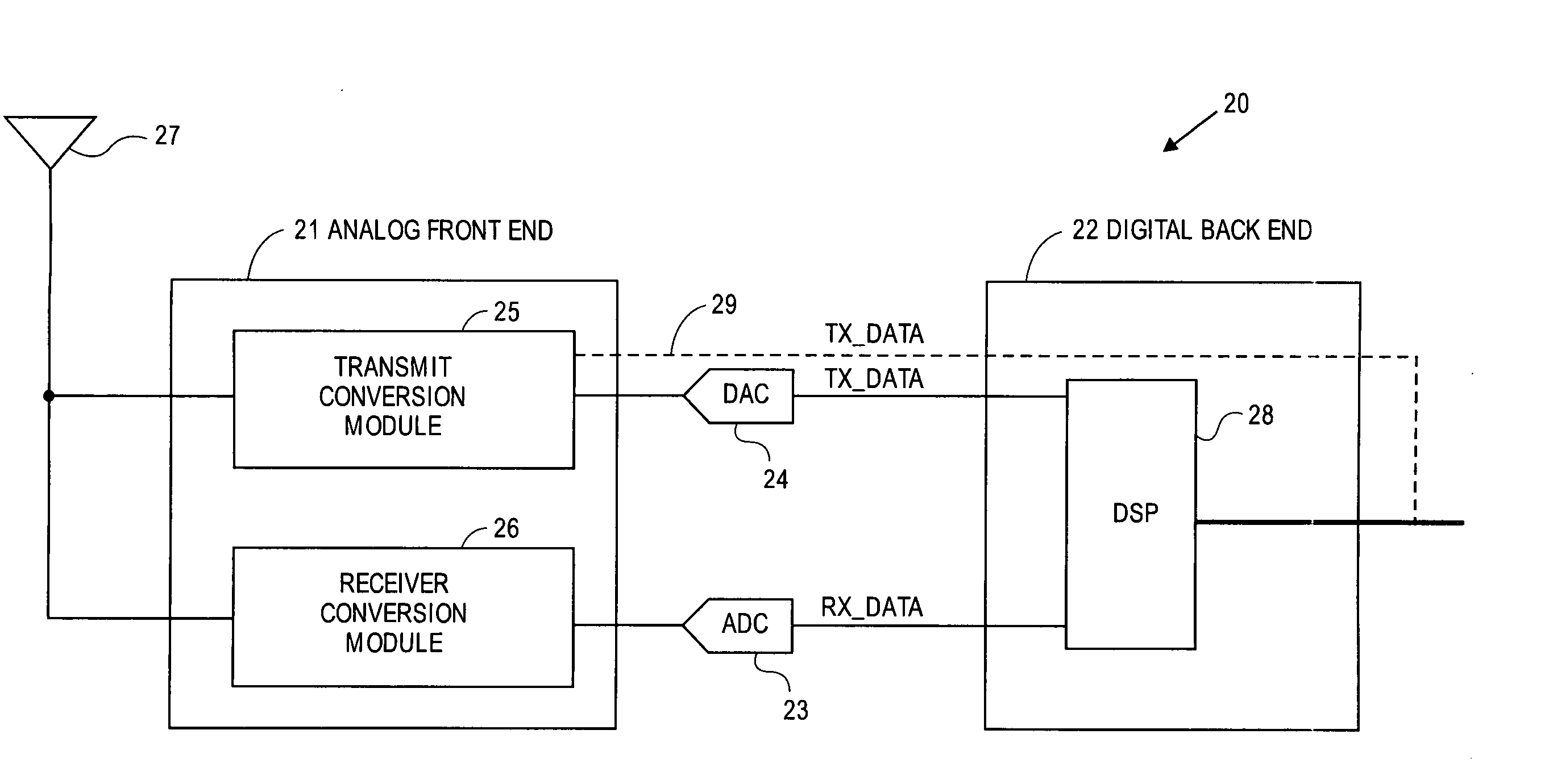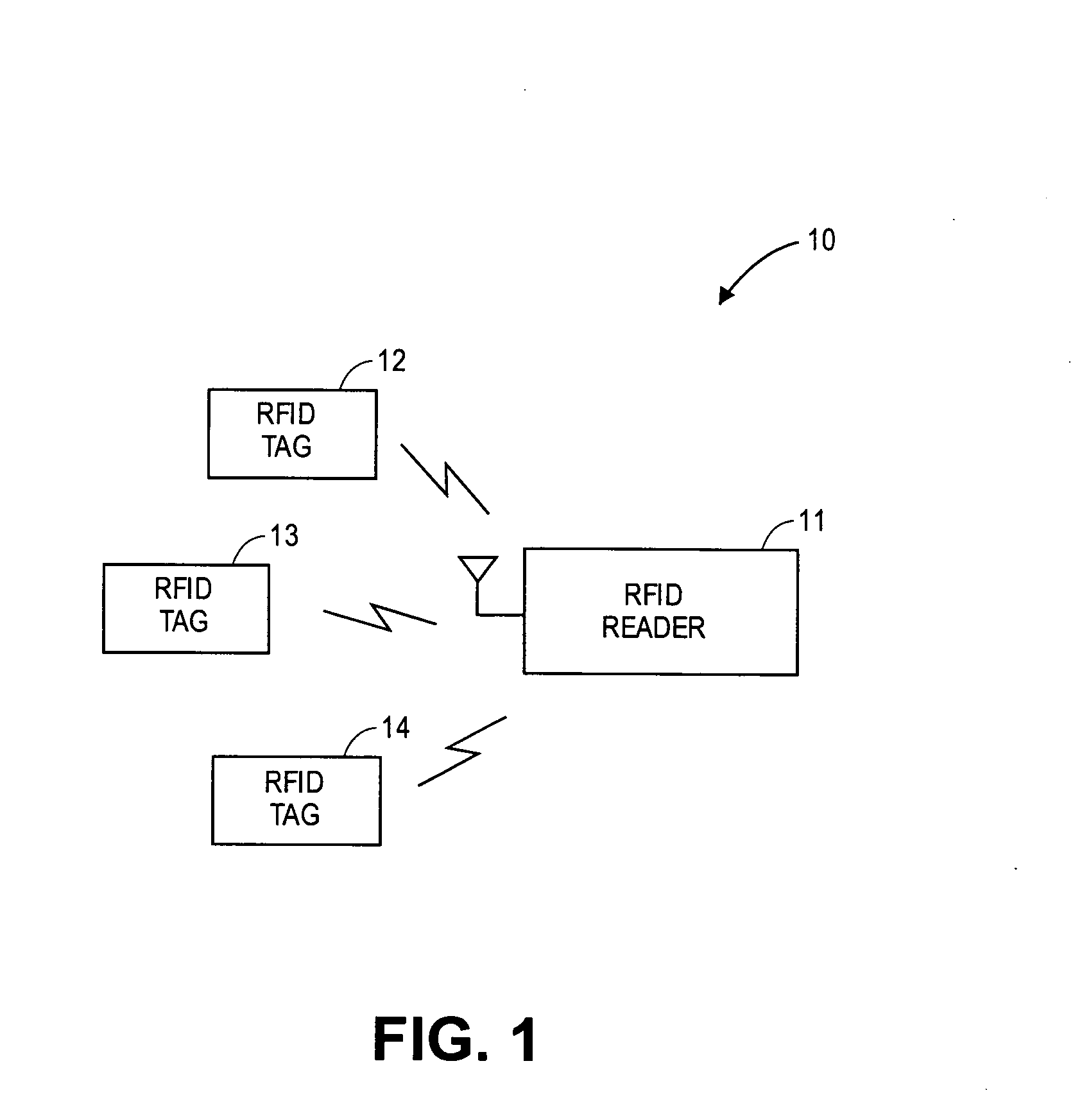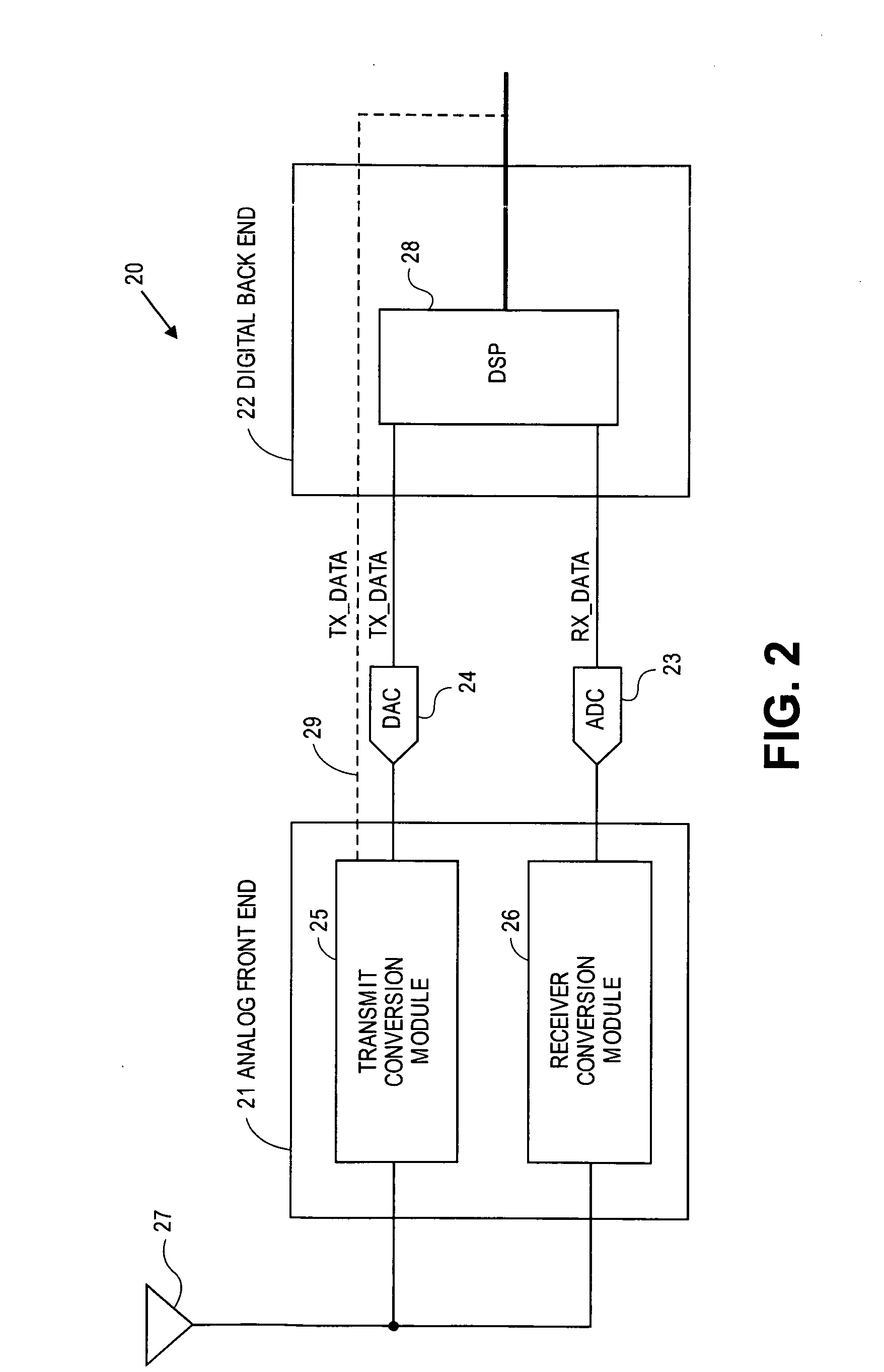Multi-protocol radio frequency identification reader transceiver
a radio frequency identification and transceiver technology, applied in the field of transceivers, can solve the problems of complex rfid devices that may be needed to handle the type of data being transmitted, and the amount of data that can be processed by existing rfid circuitry,
- Summary
- Abstract
- Description
- Claims
- Application Information
AI Technical Summary
Benefits of technology
Problems solved by technology
Method used
Image
Examples
Embodiment Construction
[0024] The embodiments of the present invention may be practiced in a variety of settings that implement a radio frequency identification (RFID) transceiver, either in a reader or in a tag, or in both. In one described embodiment, a RFID transceiver is implemented in a reader that incorporates an analog front end and a digital backend. One embodiment of the reader uses a down-conversion mixer, an analog-to-digital converter (ADC) and a digital-signal-processor (DSP). In another described embodiment, a RFID transceiver is implemented in a tag that also may incorporate an analog front end and digital processing. One embodiment of the tag uses pulse / level detection based on adaptive threshold control using a sample and hold circuit and an automatic gain control (AGC) circuit to adjust to the strength of the received signal. It is to be noted that the below described embodiments are just some of the embodiments available to practice the invention and that other embodiments may be readil...
PUM
 Login to View More
Login to View More Abstract
Description
Claims
Application Information
 Login to View More
Login to View More - R&D
- Intellectual Property
- Life Sciences
- Materials
- Tech Scout
- Unparalleled Data Quality
- Higher Quality Content
- 60% Fewer Hallucinations
Browse by: Latest US Patents, China's latest patents, Technical Efficacy Thesaurus, Application Domain, Technology Topic, Popular Technical Reports.
© 2025 PatSnap. All rights reserved.Legal|Privacy policy|Modern Slavery Act Transparency Statement|Sitemap|About US| Contact US: help@patsnap.com



